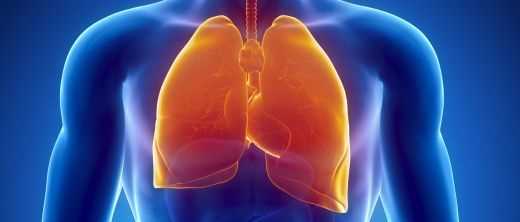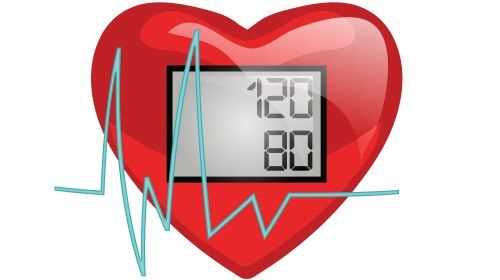If the blood pressure in the vessels of the lungs is increased, experts also speak of pulmonary hypertension. Pulmonary hypertension is very dangerous; if left untreated, it leads to heart failure in the long term. What symptoms are typical, how is pulmonary hypertension treated and what are the causes?
When we talk about high blood pressure, we usually mean the pressure in the large vessels that lead away from the heart and supply the body with blood. But blood pressure can also be too high in the lungs.
Article content at a glance:
Pulmonary hypertension: how does pulmonary hypertension develop?
The heart is divided into two parts. The right side pumps blood into the arteries of the pulmonary circulation, which then branch out into the finest hair vessels. These capillaries surround the alveoli like a fine network, where gas exchange takes place: oxygen is absorbed from the air we breathe, carbon dioxide is released from the blood.
If the blood vessels in the lungs are narrowed, the flow resistance increases and, as a result, the pressure increases. The pressure in the vessels of the lungs is much lower than in the arteries that supply the rest of the body: this serves to protect the fine capillaries. As a rule, it is up to 20 mmHg, with pulmonary hypertension the pressure is permanently higher than 25 mmHg. Values between 21 to 24 mmHg are considered a preliminary stage to pulmonary hypertension, and those affected usually do not feel any symptoms.
However, over time, the high pressure leads to further changes in the vessel wall: the narrowing progresses and the pressure continues to rise.
Due to the increased resistance in the lungs, the heart has to pump more forcefully in order to transport enough blood into the pulmonary circulation. This is why pulmonary hypertension also leads to changes in the heart muscle, especially on the right side. Pulmonary hypertension often results in right heart failure (heart failure), in the worst case heart failure.
Pulmonary hypertension: symptoms of pulmonary hypertension
The blood flow is partially blocked by the constrictions in the pulmonary arteries, which is why less blood flows through the body and lungs. The pulmonary hypertension can also result in poorer oxygen uptake. If too little blood is pumped through the body or if it is not sufficiently saturated with oxygen, this results in reduced performance and faster exhaustion.
Other symptoms of pulmonary hypertension are:
- fatigue
- Blue lips (cyanosis)
- dizziness
- Chest pain
- Angina pectoris
- Accelerated heart rate / racing heart (tachycardia)
- Water retention, for example in the legs (edema)
Edema is a typical symptom of heart failure. Because too little blood is pumped into the lungs and body circulation, it builds up in the legs. Fluid then seeps into the surrounding tissue, causing swelling. Edema occurs as a symptom especially after long-standing pulmonary hypertension, when the right half of the heart is already severely damaged and heart failure is present.
If the oxygen supply for the body is greatly reduced, in some cases it can lead to unconsciousness during physical exertion.
What are the causes of pulmonary hypertension?
The causes of the narrowed pulmonary vessels and pulmonary hypertension are diverse. An existing underlying disease is usually the trigger for pulmonary hypertension. Only in very rare cases does pulmonary hypertension develop without another disease as the cause. In this case, experts speak of primary or idiopathic pulmonary hypertension. Even if the exact causes and mechanisms of primary pulmonary hypertension are unclear, research suggests a genetic component and an imbalance in certain messenger substances.
In secondary pulmonary hypertension, another disease precedes the pulmonary hypertension and is the trigger. People with left heart failure are particularly at risk. The weak left half of the heart cannot pump enough blood into the body; the blood from the right half builds up in the lungs and increases the pressure there.
Other conditions that can cause pulmonary hypertension:
In addition, drugs, environmental toxins and medications such as appetite suppressants can trigger chronic pulmonary hypertension.
Diagnosis: How is pulmonary hypertension determined?
If those affected come to a specialist clinic or practice with symptoms, a series of examinations and tests are carried out. Since the symptoms are ambiguous, a large number of other diseases, especially heart diseases, must be ruled out. In order to avoid misdiagnosis, if pulmonary hypertension is suspected, a specialist pulmonary clinic should be consulted to make the diagnosis or to rule it out.
In contrast to arterial blood pressure, which is measured non-invasively on the arm, the pressure in the lungs cannot be recorded in this way. The blood pressure in the lungs can be recorded using a right heart catheter examination. A thin tube is pushed through a vein into the heart and further into a pulmonary artery. A sensor can detect the pressure. The procedure is minimally invasive, but it is not entirely without risks. Bleeding at the puncture site and injuries to a vessel can occur.
In addition, further examination methods are required to determine the condition of the lungs and their blood vessels. The most important diagnostic tests for pulmonary hypertension include:
- Spirometry (lung function test)
- Ultrasound of the chest and heart (transthoracic echocardiography)
- Computed tomography
- X-ray examination of the chest
- Electrocardiogram (EKG)
- Computed tomography (CT)
- Laboratory test of the blood
- Blood gas analysis
A 6-minute walk test is often carried out in order to determine the physical endurance of the patient: The distance that someone covers in six minutes is measured. Sometimes vital parameters such as pulse, blood pressure and oxygen saturation are also measured.
How is pulmonary hypertension treated?
Treatment for pulmonary hypertension depends on its underlying cause. If pulmonary hypertension is the result of an existing underlying disease, it must first be treated in order to reduce the pressure in the lungs.
If, for example, the diameter of the vessels in the lungs has been reduced by scar tissue after a pulmonary embolism, an operation can help to remove the scar tissue and thus reduce the pressure. This happens during a pulmonary endarterectomy, a risky procedure that, despite all the risks, restores quality of life to those affected and significantly improves their prognosis.
Medication can also help alleviate symptoms. They usually have a vasodilating effect and thus lower the blood pressure in the lungs. Preparations from different groups of active ingredients are available, including high-dose calcium antagonists, endothelin receptor antagonists and therapeutic agents from the group of prostanoids to treat pulmonary hypertension.
Oxygen therapy can help for people with insufficient blood gas levels. If edema occurs, loop diuretics and lymphatic drainage are possible forms of treatment to remove excess fluid from the tissue and alleviate the symptoms.
Prognosis and life expectancy with pulmonary hypertension
Pulmonary hypertension is incurable; if left untreated, pulmonary hypertension leads to heart failure and consequently to heart failure. Targeted treatment can improve both quality of life and life expectancy. The aim is to stabilize the condition of those affected and to protect the heart from progressive insufficiency.
Life expectancy with pulmonary hypertension with therapy depends on many factors, including age, the severity of the hypertension and the time of diagnosis. If the high pressure in the lungs is detected late and treatment is initiated late, the prognosis is less favorable. It is therefore particularly important to pay attention to possible signs and to seek medical advice quickly if symptoms occur.
It is also important not to put additional strain on the heart and lungs. Weight reduction is necessary if you are overweight and smoking should be stopped.
Even if those affected often suffer from fatigue and shortness of breath easily, moderate exercise can help maintain a healthy weight and improve their general health. Experts can help find a suitable exercise program that does not overload the heart and lungs.
Can you prevent pulmonary hypertension?
In order to prevent pulmonary hypertension, it is important to know the underlying diseases and treat them accordingly at an early stage. In addition, risk factors such as tobacco consumption should be avoided and if you have complaints you should not hesitate too long to seek medical advice.
.


